A sampling of our trees
It’s my goal to create an extensive collection of all the tree crops that will grow in our climate. As Vermont warms we will plant crops that are marginally hardy today. I believe that it is imperative that we protect the many valuable cultivars that people have created over the ages. The security of our food supply depends on us having a diversity of crops to rely on.
Buartnut (Butternut x Japanese Heartnut hybrid)
Our native Butternuts, Juglans cinerea, are dying at an alarming rate due to the appearance of the fungal disease Sirococcus clavignenti-juglandacearum. A close relative of Butternuts called Japanese Heartnut is a selection of Juglans ailantifolia and are resistant to this disease. Juglans ailantifolia passes this disease resistant ability on to hybrids created between it and Butternuts which are called Buartnuts. Above is a seedling that is about 16 years old with developing nuts. I find Butternuts to be superior in taste to Buartnuts but the larger leaves are gorgeous and the horizontal growth habit of the mature trees is very picturesque. I hope to raise seedlings of crosses made between our local butternuts with various Buartnut grafted trees that we are growing. This way some of the genetics of our local butternuts will be preserved with the creation of the resulting crosses. We have four grafted varieties of Buartnuts as well as five open pollenated seedlings. The grafted varieties that we are growing are Cosan, Mitchell, Coble 1 and Rhodes.
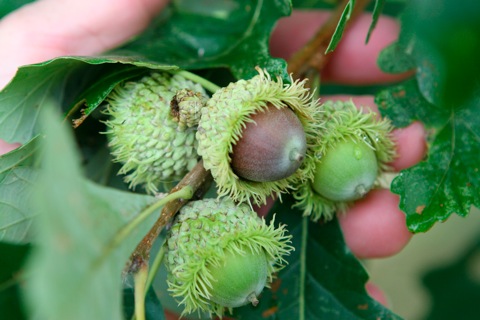
Quercus macrocarpa ‘Kreider”
I have planted several Bur Oaks (Quercus macrocarpa) as well as hybrids that have acorns with low tannin levels which are referred to as being “sweet”. It is tannins that give acorns their bitter taste and the oaks that I’m growing have eatable acorns that can be used to make flour. I have a section on this web site that will go into more detail about the oaks that we are growing.
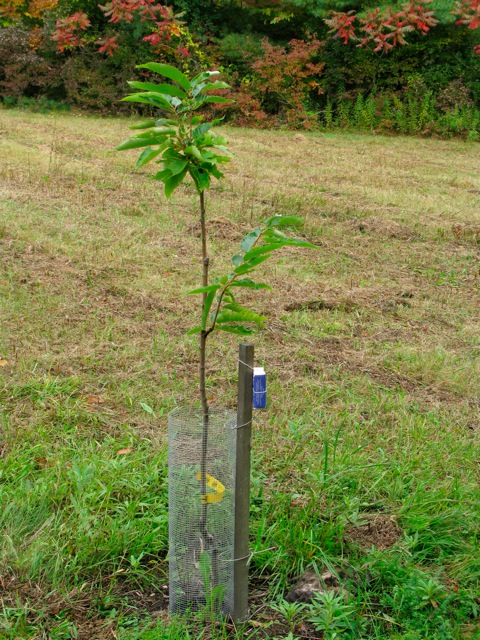
grafted Bouche de Betizac Chestnut
I have always loved Chestnuts and started planting American Chestnuts (Castanea dentata) 10 years ago. Three years ago I started to plant various disease resistant chestnuts that have Japanese, Chinese and European Sweet Chestnut genetics. So far all the Chestnuts that we grow have proven hardy and we continue to expand our collection. Our soil’s pH is a bit high for Chestnuts but we hope that with amending the soil with pine needles we will be able to improve their growing conditions. Chestnuts are annual producers of nuts and have been cultivated by humans for thousands of years. Exciting work is being done to develop disease resistant American Chestnuts, returning this tree to the forests of its former range will be a great benefit to wildlife and people.
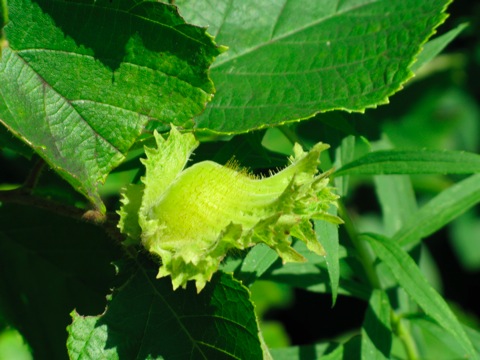
American Hazelnut
Hazelnuts like Chestnuts have a long history with humanity. Our European ancestors relied on hazelnuts as an important food source. Up to this point I have only planted American Hazelnuts but next spring I will be purchasing several named cultivars with a mixture of American and European genetics. I find these shrubs to be very attractive and the early flowering is a welcome sign of spring.
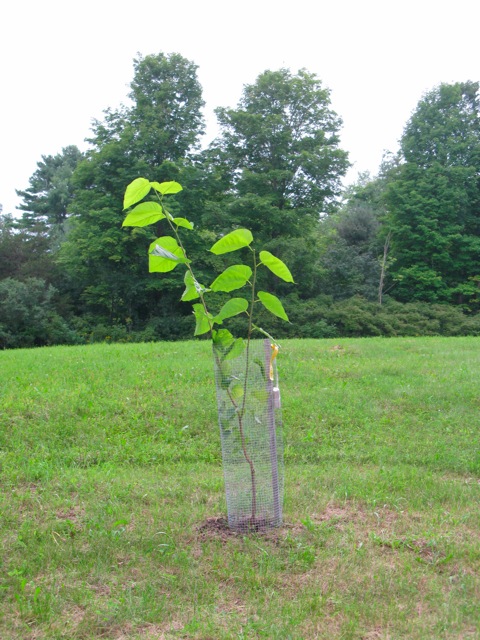
Illinois Everbearing Mulberry
John is very found of Mulberries and we have planted three different varieties so far. Our three young Illinois Everbearing Mulberries have been producing very sweet fruit since the first year that they were planted. There are several reasons to plant Mulberries first being that they produce very tasty fruit for human consumption. Mulberries also will draw birds away from other fruit such as cherries which are considered more favorable for human consumption. Mulberries are also relished by livestock, chickens and pigs will feed on the fallen fruit. We planted our Mulberries a distance from our house so that we are less likely to be impacted by the staining that can be caused by the purple fruit. Two of the Mulberries that we have are white fruited so staining wont be a problem with them.
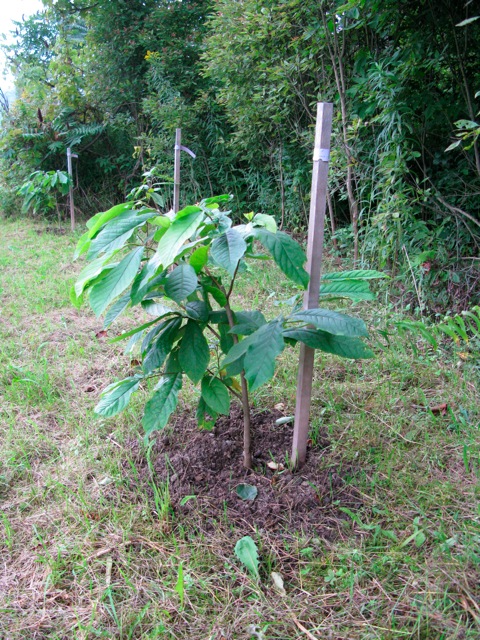
grafted Paw Paw
We have 8 grafted Paw Paws and this will be their second winter here at Beech Hill. Last winter they were exposed to -20F and suffered no die back. The only problem so far is that rabbits have browsed on their branches. I have read that Paw Paws like to have shade when they are young and first getting established. I planted ours on the North side of some brush so when they are young they will have protection from the strong summer sun. Once the Paw Paws have had a nice start I will remove the brush.
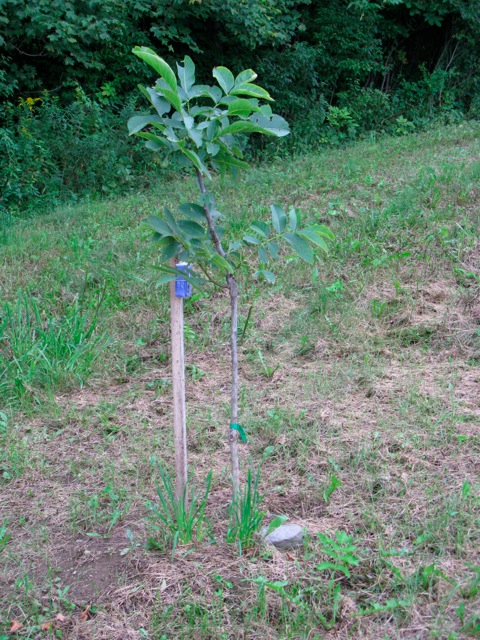
grafted Carpathian Walnut
I know little about Carpathian Walnuts when we added them to our collection. I planted two grafted varieties spring of 2009 as well as five seedlings from selected cultivars. If they do well I will plant more grafted varieties. I planted them in areas that have good air drainage and a lighter soil. I also planted them in locations where they will be in the shade during the coldest months of the year when the sun is low in the sky. I believe that more tender trees have a greater chance of avoiding winter damage if the don’t go through the swings of temperature from being in a warm winter sun to subzero temperatures during the night. I thought of wrapping the trunks of these young trees but decided to find out how tough they are. We will see.
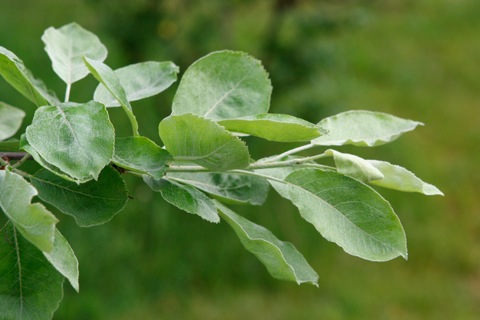
hybrid Sorbus ‘Shipova’
Shipova is a cross between a Mountain Ash and a Pear which produces edible fruit. I’m fond of the grey green foliage which contrasts nicely with a Colorado Spruce and Prairie Fire Crabapple growing nearby. The crunchy sweet fruit looks like a small roundish pear. I plan on planting more Sorbus hybrids and species selections in the future.
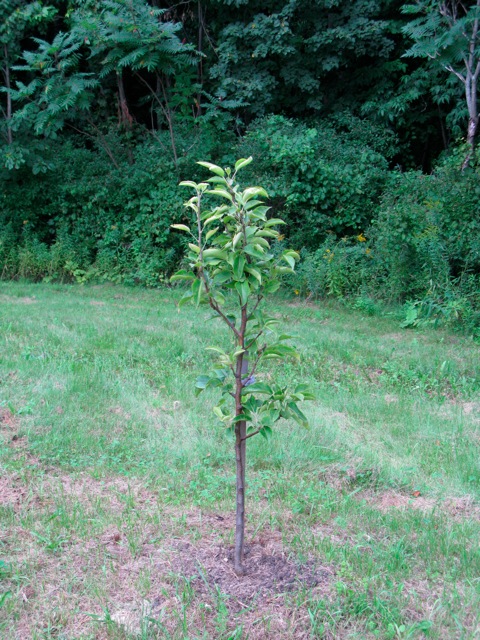
Shinseiki Asian Pear
Asian Pear produce round fruits like that of an apple and some varieties are easily stored for months. Some varieties of Asian Pear can have problems with overbearing so fruit might need to be thinned. Shinseiki is a self pollinating variety that has proven to be hardy. Before I protected my trees with bars of soap the deer browsed the above tree back to the main trunk. The soap has kept the deer away and I hope to get fruit from this tree soon.